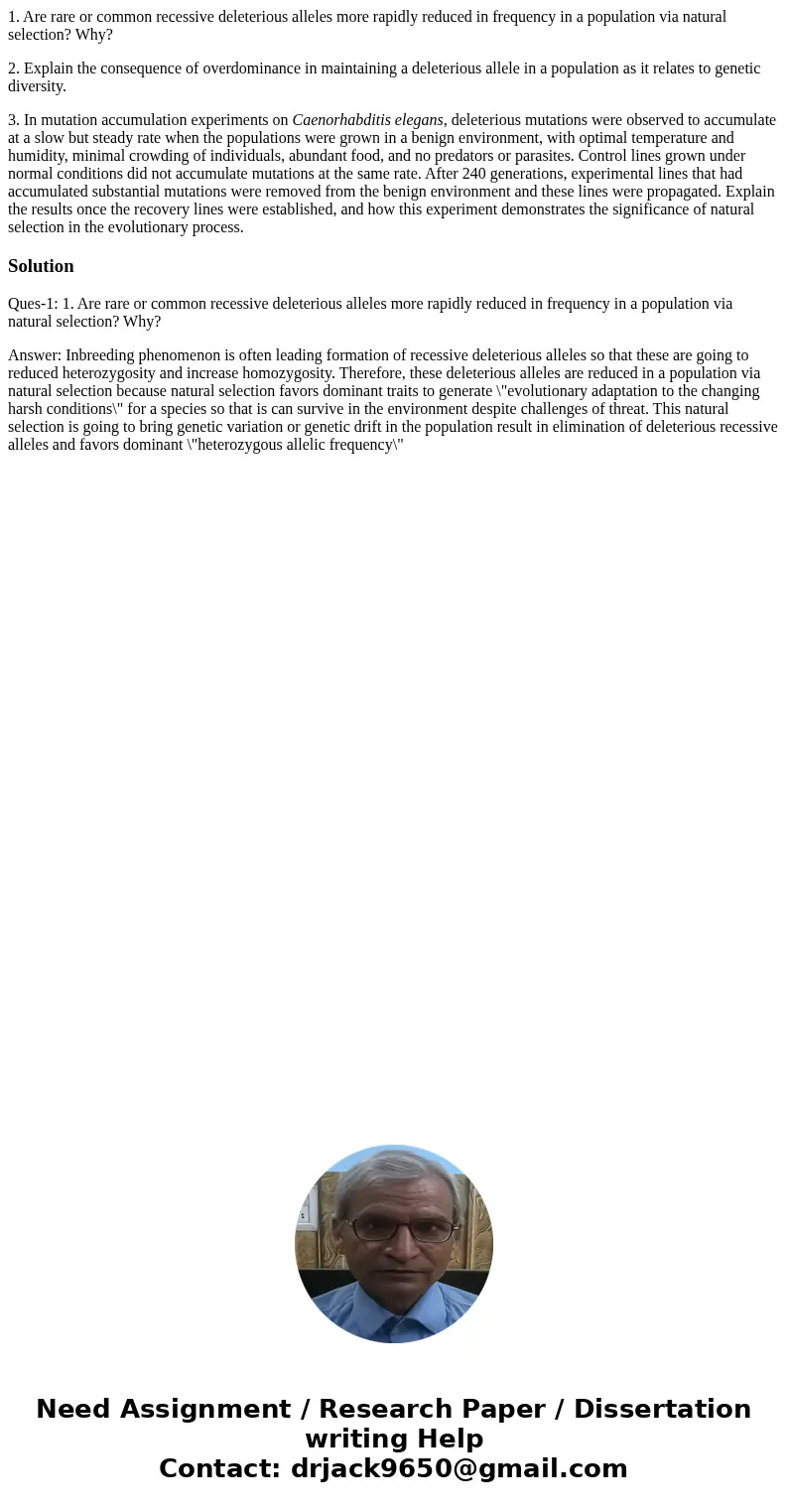1 Are rare or common recessive deleterious alleles more rapi
1. Are rare or common recessive deleterious alleles more rapidly reduced in frequency in a population via natural selection? Why?
2. Explain the consequence of overdominance in maintaining a deleterious allele in a population as it relates to genetic diversity.
3. In mutation accumulation experiments on Caenorhabditis elegans, deleterious mutations were observed to accumulate at a slow but steady rate when the populations were grown in a benign environment, with optimal temperature and humidity, minimal crowding of individuals, abundant food, and no predators or parasites. Control lines grown under normal conditions did not accumulate mutations at the same rate. After 240 generations, experimental lines that had accumulated substantial mutations were removed from the benign environment and these lines were propagated. Explain the results once the recovery lines were established, and how this experiment demonstrates the significance of natural selection in the evolutionary process.
Solution
Ques-1: 1. Are rare or common recessive deleterious alleles more rapidly reduced in frequency in a population via natural selection? Why?
Answer: Inbreeding phenomenon is often leading formation of recessive deleterious alleles so that these are going to reduced heterozygosity and increase homozygosity. Therefore, these deleterious alleles are reduced in a population via natural selection because natural selection favors dominant traits to generate \"evolutionary adaptation to the changing harsh conditions\" for a species so that is can survive in the environment despite challenges of threat. This natural selection is going to bring genetic variation or genetic drift in the population result in elimination of deleterious recessive alleles and favors dominant \"heterozygous allelic frequency\"

 Homework Sourse
Homework Sourse